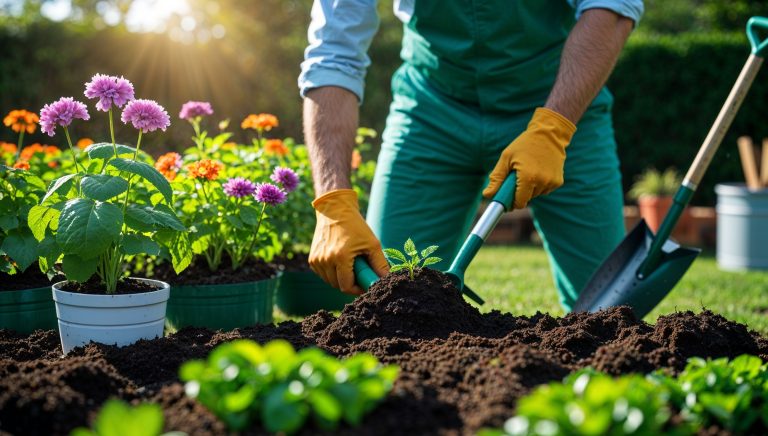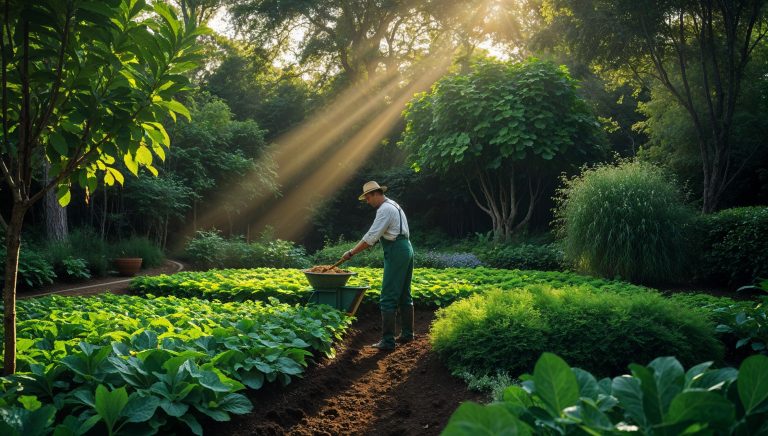

Growing a vegetable garden at home is one of the most rewarding and sustainable activities you can do. Whether you have a small balcony or a spacious backyard, growing your own food allows you to enjoy fresh, nutritious vegetables while connecting with nature. However, creating a beautiful vegetable garden requires some planning, effort, and care. In this article, we’ll guide you through the essential steps to create a stunning vegetable garden that will provide you with fresh produce year-round.
The location of your vegetable garden plays a critical role in its success. Most vegetables need plenty of sunlight to thrive, and the right location will ensure your garden receives all the necessary sunlight, water, and nutrients.
Vegetables typically require between 6 and 8 hours of direct sunlight each day for optimal growth. When selecting a spot for your vegetable garden, observe how much sunlight different areas of your yard receive. Sunny spots are perfect for vegetables like tomatoes, peppers, cucumbers, and squash. On the other hand, leafy greens like spinach, kale, and lettuce can tolerate partial shade, making them ideal for slightly shaded areas.
If you live in a region with intense sunlight, be sure to provide some shade for sensitive plants. Using garden structures like trellises or shade cloth can protect delicate vegetables from overheating. Ensure that the location you choose has good airflow, as stagnant air can lead to mold and pest problems.
Another important factor when choosing the location is accessibility. Make sure the area is easily accessible for tasks such as watering, weeding, and harvesting. If you’re working with a small space, containers or raised beds may be ideal for easy access and to optimize the available area. For larger gardens, it’s essential to leave enough room for each plant to grow and spread out.
Additionally, consider the proximity to a water source. A location near a hose or irrigation system will make it easier to keep your plants hydrated, especially in hot weather.
Healthy soil is the foundation for a thriving vegetable garden. The better the soil, the better your vegetables will grow. Soil preparation includes testing its quality, amending it with necessary nutrients, and ensuring proper drainage.
Before you start planting, it’s crucial to test the soil to determine its pH and nutrient levels. Most vegetables prefer slightly acidic to neutral soil, with a pH of 6.0 to 7.0. You can purchase a soil test kit to check the pH and nutrient content. If the soil is too acidic or alkaline, you can adjust it by adding lime (to raise pH) or sulfur (to lower pH). Testing the soil helps you understand what amendments are needed for optimal growth.
Once you’ve tested your soil, it’s time to improve it. The majority of vegetables thrive in well-draining, nutrient-rich soil. If your soil is heavy and clay-like, mix in organic matter such as compost, aged manure, or leaf mold to improve its texture and drainage. Organic matter also provides essential nutrients to plants and encourages beneficial microorganisms to thrive in the soil.
For sandy soils, amend the soil with compost to help retain moisture and add nutrients. Ensure that the soil is loose and crumbly, as this allows roots to grow deeply and absorb water and nutrients efficiently.
In addition to adding organic matter, you may need to fertilize your soil to give your vegetables the nutrients they need. Use a balanced fertilizer that provides essential nutrients such as nitrogen, phosphorus, and potassium. Organic fertilizers like compost and fish emulsion are great choices as they enrich the soil naturally. Apply fertilizer in the spring and throughout the growing season according to the needs of the plants.
Choosing the right vegetables is one of the most important decisions when starting your garden. Not all vegetables grow well in every climate, so it’s essential to choose varieties that are suited to your local growing conditions.
If you’re new to gardening, start with vegetables that are easy to grow and maintain. Vegetables like lettuce, spinach, radishes, carrots, and herbs like basil and mint are perfect for beginners. These vegetables grow quickly and require minimal care, making them ideal for those just starting out in gardening. Additionally, they can be grown in small spaces like containers or raised beds.
Tomatoes and peppers are also popular and relatively easy to grow for beginners, although they may require a little more care in terms of watering and pest management. Start with a few varieties and expand as you gain confidence in your gardening skills.
Understanding the growing season of each vegetable is also essential for a successful garden. Some vegetables, like kale, spinach, and peas, are cold-hardy and do well in the cooler months of spring and fall. Others, like tomatoes, beans, and cucumbers, thrive in the warmer summer months. Make sure to plant the right vegetables for the appropriate season to maximize your harvest.
Another important consideration when selecting vegetables is companion planting. Certain plants thrive when grown near each other, while others may inhibit growth. For example, planting basil near tomatoes can improve their flavor and help repel pests, while beans can benefit from the nitrogen-fixing properties of peas. Research companion planting to maximize your garden’s efficiency and growth.
Once the soil is prepared and you’ve selected the right vegetables, it’s time to plant them. Proper planting ensures that your vegetables have enough space to grow and thrive.
Each vegetable has specific planting depth and spacing requirements. Follow the instructions on seed packets or plant labels to ensure proper growth. As a general rule, plant seeds at a depth that is about twice the size of the seed itself. For example, smaller seeds like lettuce should be planted shallowly, while larger seeds like beans need deeper planting.
Ensure that you space your plants properly to allow for adequate airflow and room for growth. Overcrowding can lead to poor air circulation, which encourages fungal diseases and reduces plant productivity. Be mindful of how large each plant will grow when selecting the spacing.
After planting, water your vegetables thoroughly to help settle the soil around the roots. Be sure to water deeply, soaking the root zone. Overhead watering can lead to fungal diseases, so it’s best to water at the base of the plants. For containers, ensure that there are drainage holes to avoid waterlogging the roots.
Once your vegetables are planted, it’s important to give them consistent care to ensure they grow strong and healthy. This includes watering, fertilizing, weeding, and managing pests.
Vegetables need regular watering, especially during hot weather. Water deeply to encourage roots to grow deep into the soil. Check the soil moisture regularly and adjust your watering schedule based on the weather. Water in the early morning or late evening to reduce evaporation and give the plants time to absorb the water before the heat of the day.
Fertilize your plants every 3-4 weeks during the growing season with a balanced, slow-release fertilizer. This ensures that your vegetables receive the nutrients they need to produce healthy leaves, stems, and fruits. Be sure not to over-fertilize, as this can lead to excessive foliage growth at the expense of fruit production.
Weeds compete with your vegetables for water, nutrients, and sunlight. Keep your garden free of weeds by manually removing them as soon as they appear. Regular weeding ensures that your plants have the resources they need to grow and prevents weeds from spreading and taking over your garden.
Pests and diseases can quickly ruin your vegetable garden if left unchecked. Monitoring your plants regularly for signs of pests or diseases can help prevent major problems.
Use natural pest control methods such as introducing beneficial insects like ladybugs and lacewings, which feed on harmful pests like aphids. Neem oil and insecticidal soap are also effective at controlling pests without harming beneficial insects. Additionally, planting pest-repelling herbs like marigolds, garlic, and basil can help deter insects from your vegetable garden.
Diseases such as powdery mildew, blight, and rust can be problematic for vegetable gardens. To prevent the spread of disease, ensure your plants have proper spacing and good airflow. Water your plants at the base to avoid wetting the foliage, which can encourage mold and fungus. If you notice any diseased leaves, remove them immediately to prevent the disease from spreading to healthy plants.
The best part of gardening is harvesting the fruits of your labor. Knowing when to harvest your vegetables is key to enjoying the best flavor and texture.
Each vegetable has its own optimal harvesting time, so be sure to check the seed packet or plant label for specific instructions. Generally, vegetables like lettuce, spinach, and radishes can be harvested as soon as they reach maturity, while others like tomatoes, cucumbers, and peppers should be picked when they are fully ripe.
If you have a large harvest, consider preserving your vegetables by canning, freezing, or drying them. Proper storage can extend the life of your homegrown produce and allow you to enjoy fresh vegetables long after the growing season has ended.